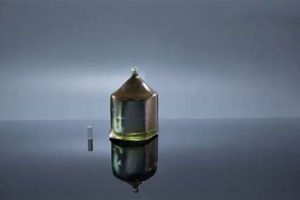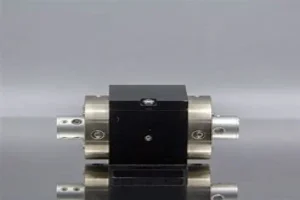Introduction
In the world of high-power lasers, two materials stand as titans: Sapphire and Yttrium Aluminum Garnet (YAG). These two crystals have revolutionized the industry, offering unparalleled thermal conductivity, optical quality, and a wide range of applications in high-energy laser systems.
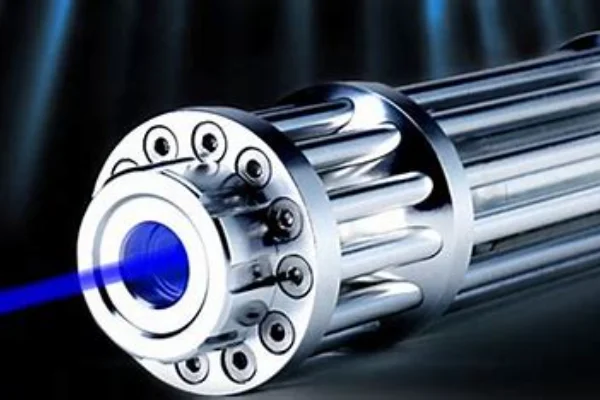
Sapphire: A Crystal of Many Virtues
The versatility of Sapphire extends to its physical properties as well. It is one of the hardest substances on earth, second only to diamond, making it highly resistant to scratches and abrasions. This durability, combined with its thermal and optical properties, makes Sapphire an excellent choice for demanding laser applications where both performance and longevity are required.
Moreover, Sapphire’s high melting point allows it to operate effectively in high-temperature environments, a common scenario in high-power laser systems. This resilience to heat further enhances its suitability for high-power applications, ensuring consistent performance even under challenging conditions.
Sapphire’s wide bandgap also allows it to handle high electric fields and power densities, making it an excellent material for solid-state laser applications. Its ability to transmit light over a wide range of wavelengths, from ultraviolet to near-infrared, further broadens its application scope, making it a preferred choice for diverse laser systems, including medical, industrial, and scientific research lasers.
In addition to these, Sapphire’s chemical inertness makes it resistant to common chemical reactions, ensuring its stability and longevity in various environments. This property, coupled with its non-toxic nature, makes it a safe and reliable choice for various applications, including those in the medical field.
In conclusion, Sapphire’s unique combination of thermal conductivity, optical quality, physical durability, and chemical stability make it a crystal of many virtues in the high-power laser industry. Its wide range of applications, from industrial to scientific and medical, attests to its versatility and superior performance.
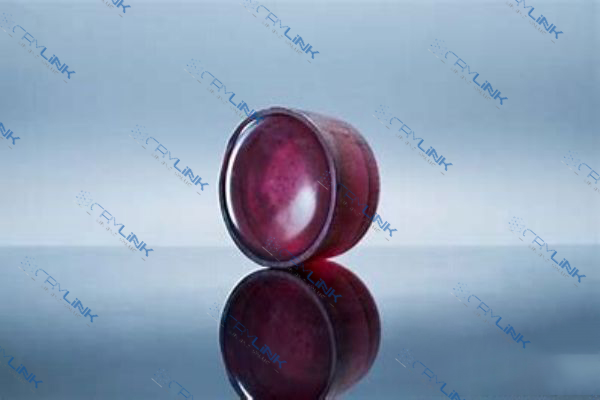
YAG: The Powerhouse Crystal
Yttrium Aluminum Garnet, commonly known as YAG, is a synthetic crystal that has made a significant impact in the high-power laser industry. Its robustness and versatility have made it a preferred choice for various laser systems, demonstrating its ability to meet diverse application requirements.
One of the standout features of YAG is its thermal conductivity. While it may not match the levels of Sapphire, YAG’s thermal conductivity is still impressive. This property allows the crystal to withstand high power densities, a critical factor in high-energy laser systems. The ability of YAG to handle these power densities without compromising its performance or integrity makes it a reliable choice for such demanding applications.
In addition to its thermal properties, YAG also boasts of excellent optical quality. It has a high damage threshold, which means it can handle intense light beams without suffering damage. This is a crucial property for high-power laser applications where the laser materials are subjected to high-intensity light pulses. Furthermore, YAG exhibits excellent optical homogeneity, ensuring that the light passing through it does not get distorted, which is critical for maintaining the quality and effectiveness of the laser beam.
But the virtues of YAG extend beyond its thermal and optical properties. Being a synthetic crystal, YAG can be doped with various ions to alter its properties and make it suitable for specific applications. For instance, when doped with neodymium ions, YAG becomes a powerful medium for solid-state lasers, producing high-intensity laser beams that are used in various applications, from industrial cutting and welding to medical procedures.
Moreover, YAG’s robustness makes it a durable choice for high-power laser systems. It can withstand harsh operating conditions, including high temperatures and intense light pulses, ensuring its longevity and consistent performance. This durability, combined with its excellent thermal and optical properties, makes YAG a powerhouse crystal in the high-power laser industry.
In conclusion, YAG’s impressive thermal conductivity, excellent optical quality, versatility, and robustness make it a heavyweight in the high-power laser industry. Whether it’s in industrial applications, scientific research, or medical procedures, YAG’s superior performance and reliability have made it an indispensable component in high-energy laser systems.
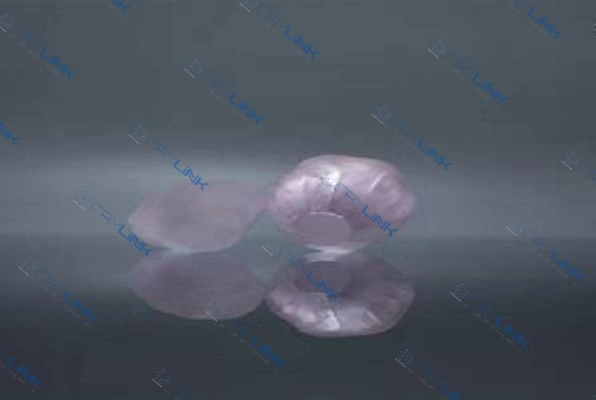
Sapphire vs YAG: A Comparative Analysis
When it comes to the realm of high-power lasers, Sapphire and Yttrium Aluminum Garnet (YAG) are two materials that stand out. Both are exceptional in their own right, each offering unique advantages that make them suited to different applications.
In terms of thermal conductivity, Sapphire has a clear edge. Its superior thermal conductivity allows it to handle high power densities while effectively managing heat. This makes Sapphire the preferred choice for applications where heat management is critical. The ability to dissipate heat effectively ensures that the crystal maintains its structural integrity even under high power densities, thereby enhancing the performance and longevity of the laser system.
On the other hand, YAG, while not matching Sapphire’s thermal conductivity, still offers impressive thermal properties. It can withstand high power densities, making it a reliable choice for high-energy laser systems. Despite its lower thermal conductivity, YAG’s robustness and ability to handle high power densities without compromising its performance make it a viable choice for various high-energy applications.
In terms of optical quality, both Sapphire and YAG excel. Sapphire’s wide transmission range, spanning from ultraviolet to near-infrared, makes it versatile for various laser applications. Its excellent optical quality ensures that the laser beam maintains its quality and effectiveness, thereby enhancing the performance of the laser system.
However, when it comes to high-energy laser systems, YAG’s high damage threshold gives it an advantage. The ability to handle intense light beams without suffering damage is a crucial property for high-power laser applications. Furthermore, YAG’s excellent optical homogeneity ensures that the light passing through it does not get distorted, maintaining the quality and effectiveness of the laser beam.
In conclusion, while both Sapphire and YAG are exceptional materials for high-power lasers, they each offer unique advantages. Sapphire’s superior thermal conductivity makes it the preferred choice for applications requiring effective heat management, while YAG’s high damage threshold and optical homogeneity give it an edge in high-energy laser systems. The choice between Sapphire and YAG ultimately depends on the specific requirements of the application, with each material offering unique benefits that make them suited to different high-power laser applications.
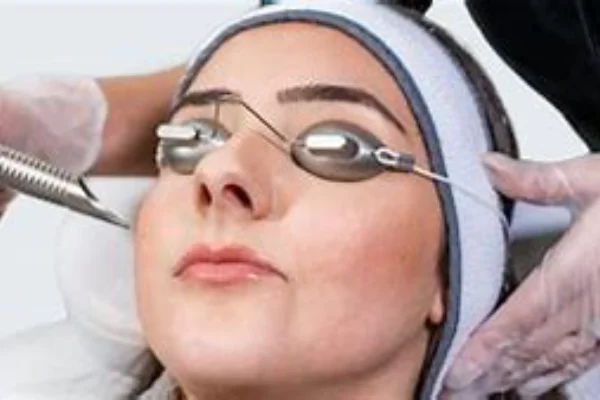
Applications of Sapphire and YAG in High-energy Laser Systems
The exceptional properties of Sapphire and Yttrium Aluminum Garnet (YAG) have led to their widespread use in various high-energy laser systems. Each of these materials brings unique advantages to the table, making them ideal for different applications within the realm of high-power lasers.
Sapphire, with its excellent thermal conductivity and optical quality, has found a significant place in high-power laser systems. Its ability to handle high power densities while effectively managing heat makes it an ideal choice for applications that require high power and precision. For instance, Sapphire is commonly used in laser cutting, where its thermal properties ensure that the laser maintains its precision even under high power. Similarly, in laser welding and drilling, Sapphire’s ability to dissipate heat effectively ensures that the structural integrity of the material being worked on is maintained, thereby enhancing the quality of the output.
On the other hand, YAG, known for its robustness and versatility, is a popular choice for high-energy laser systems. Its ability to withstand high power densities without compromising its performance makes it a reliable choice for various applications. For instance, YAG is often used in laser marking and engraving, where its high damage threshold ensures that the laser can create precise and permanent marks without damaging the material. Furthermore, YAG’s excellent optical homogeneity ensures that the laser beam does not get distorted, thereby maintaining the quality and effectiveness of the marking or engraving.
In addition to these, YAG has also found significant use in medical lasers. Its ability to produce high-intensity laser beams makes it ideal for various medical procedures, from surgical operations to cosmetic treatments. The robustness and reliability of YAG ensure that these medical procedures can be carried out safely and effectively.
In conclusion, the exceptional properties of Sapphire and YAG have made them indispensable in the world of high-energy laser systems. Whether it’s in industrial applications like cutting, welding, and drilling, or in more specialized applications like marking, engraving, and medical lasers, Sapphire and YAG have proven their worth time and again. Their unique advantages and versatility ensure that they will continue to play a pivotal role in the advancement of high-power laser technology.
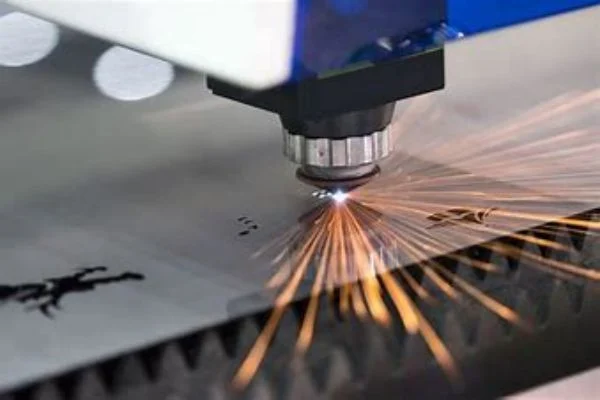
Conclusion
Sapphire and YAG are indeed the titans of high-power lasers. Their exceptional thermal conductivity, optical quality, and versatility in various applications make them indispensable in the industry. As technology continues to advance, these two crystals will undoubtedly continue to play a pivotal role in shaping the future of high-energy laser systems.
Frequently Asked Questions
- What makes Sapphire and YAG ideal for high-power lasers?
Sapphire and YAG are ideal for high-power lasers due to their excellent thermal conductivity and optical quality. - How does Sapphire’s thermal conductivity compare to YAG’s?
Sapphire has higher thermal conductivity than YAG, making it better suited for applications where heat management is critical. - What are some applications of Sapphire and YAG in high-energy laser systems?
Sapphire and YAG are used in various applications, including laser cutting, welding, drilling, marking, engraving, and medical lasers. - What is the advantage of YAG’s optical quality?
YAG’s optical quality is characterized by a high damage threshold and excellent optical homogeneity, making it ideal for high-power laser applications. - Are Sapphire and YAG synthetic or natural crystals?
While Sapphire can be both natural and synthetic, YAG is a synthetic crystal.


